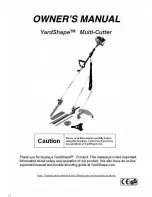
LOCAL OPERATION
Apply power and allow the instrument to warm up.
A warm-up of thirty minutes is adequate for most
operations, however, forty five minutes is recom-
mended for critical processes.
A graphic menu tree has been placed at the end of
this section, and a larger, fold-out menu tree has
been placed inside the rear cover pocket of this
manual for your convenience. It might help to keep
a copy of the menu tree handy while following the
text of this section, and also to post one near the
instrument until operators are familiar with the
front panel functions.
DISPLAY
STANDBY MODE:
MEASURED:
nn.nnn PSI A
Upon completion of the initialization process the
display will stabilize as above, where “n” represents
the number value of the pressure trapped in the
primary transducer. The system was configured at
the factory to display pressure in the units that
were specified when the instrument was ordered.
Other measurement units can be selected by the
user, as explained in the text under Mode Func-
tions, and as shown by the menu tree.
The display consists of two lines of 40 characters
each.
.....................................TTT
.....................................BBB
The last three characters of the top line (TTT) are
reserved to display either 2nd or [R] while the last
three characters of the bottom line (BBB) are re-
served to display [S] or [U] while in CONTROL
mode. The meaning of each display is:
Top Line:
2nd
the keypad is in MODES condition;
else is NUMERIC input.
[ R ]
the
PCS 400
is set for REMOTE
operation and keypad is disabled;
else is LOCAL operation.
Bottom Line:
[ S ]
the displayed control pressure is
STABLE.
[ U ]
the displayed control pressure is
UNSTABLE.
These definitions are explained in more detail un-
der the heading KEYPAD, which is next.
KEYPAD
The four-by-four matrix of membrane input keys
on the front panel is composed of sixteen multi-
purpose switches. Each switch has a tactile feel for
closure, and an audible “BEEP” to confirm entry.
A low frequency “BLAP” is emitted for an unaccept-
able entry or value. The effect of any individual key
press depends on the present situation as shown
on the display, and on the condition of the [2nd]
key which toggles the keypad between NUMERIC
entry and MODE selection. The next few pages will
explain each key entry.
Numeric Entry
If 2nd is not showing on the display, then each of
the fifteen numeric keys enter the number value or
the math operation (=, +,–, or CE) shown on the
center of the pad. Numbers being entered are not
recognized by the system until the = key is pressed.
The sixteenth key, labeled [2nd], toggles the other
fifteen out of the NUMERIC entry state, and into
their MODE state.
Mode Entry
If 2nd is showing on the display the fifteen numeric
keys are in the MODE state and will function
according to the label above each key. The next
press of the [2nd] key will return all keys to their
NUMERIC functions.
2nd
F1
F2
F3
1
0
=
5
_
3
.
7
2
9
6
4
+
8
CE
METRIC
ENG
GPIB
SERIAL
CAL
TEST
LIMITS
HELP
STBY
CONT
VENT
MEAS
UNITS
COMM
Figure 3.1 - Keypad
PCS 400
LOCAL OPERATION
www.mensor.com
3-1
Содержание PCS 400
Страница 13: ...User s Notes TABLE OF CONTENTS PCS 400 xii www mensor com ...
Страница 23: ...User s Notes INSTALLATION PCS 400 2 4 www mensor com ...
Страница 41: ...User s Notes LOCAL OPERATION PCS 400 3 18 www mensor com ...
Страница 73: ...User s Notes SPECIFICATIONS PCS 400 7 4 www mensor com ...
Страница 115: ...User s Notes INDEX PCS 400 10 6 www mensor com ...
Страница 116: ......
















































